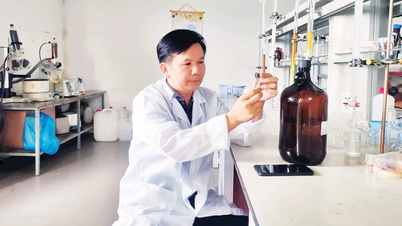Scientists at the University of California-San Francisco (UCSF) have just discovered an important mechanism that helps the brain eliminate toxic beta amyloid protein plaques, the culprit behind Alzheimer's disease.
In the new study, the team identified a receptor called ADGRG1, which is located on special immune cells in the brain called microglia.
When functioning effectively, the ADGRG1 receptor helps microglia easily “swallow” and break down beta amyloid plaques, preventing them from accumulating and causing brain damage.
When scientists disabled this receptor in mice, they observed that beta amyloid plaques rapidly accumulated, leading to severe memory impairment.
In contrast, mice with normally functioning ADGRG1 receptors had less brain damage and significantly milder disease symptoms.
“We believe this receptor helps microglia do their job of protecting brain health over many years,” said study leader Dr. Xianhua Piao.
When reanalyzing data from previous Alzheimer's patients, the team found that people with mild disease had abundant amounts of ADGRG1 on microglia. In contrast, patients with severe Alzheimer's had very low levels of ADGRG1, leading to widespread and damaging amyloid beta plaques.
ADGRG1 belongs to the G protein-coupled receptor (GPCR) family, which is well suited for drug development.
This discovery opens up great prospects for new therapies to enhance the brain's immunity, helping to prevent and treat Alzheimer's in the near future.
“Some people are lucky enough to have naturally functioning microglia,” Dr. Piao said. “But this discovery opens the door to developing drugs that could help everyone fight Alzheimer’s more effectively.”
Source: https://www.vietnamplus.vn/phat-hien-co-che-giup-nao-tu-lam-sach-mo-ra-hy-vong-chua-alzheimer-post1052194.vnp






![[Photo] Cutting hills to make way for people to travel on route 14E that suffered landslides](https://vphoto.vietnam.vn/thumb/1200x675/vietnam/resource/IMAGE/2025/11/08/1762599969318_ndo_br_thiet-ke-chua-co-ten-2025-11-08t154639923-png.webp)






































![[Video] Hue Monuments reopen to welcome visitors](https://vphoto.vietnam.vn/thumb/402x226/vietnam/resource/IMAGE/2025/11/05/1762301089171_dung01-05-43-09still013-jpg.webp)



































































Comment (0)